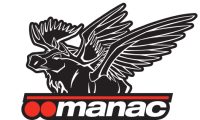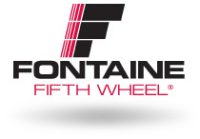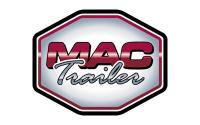Managing fleet productivity is akin to conducting an orchestra. Each vehicle plays a vital role, and when they work harmoniously, the resulting symphony is a well-optimized, profitable fleet. However, achieving this efficiency requires deep insights, strategic planning, and a commitment to continuous improvement. This comprehensive guide aims to unravel the secrets to improving fleet productivity, ensuring your fleet performs at its peak consistently.
Harness the Power of Technology: The Digital Boost
Modern fleet management has been revolutionized by technology. Leveraging these tools can yield significant productivity gains.
-
-
-
- Telematics and GPS Systems: Systems that combine GPS, vehicle diagnostics, and more can provide real-time insights into vehicle location, condition, and performance. This data can be pivotal in route optimization, preventative maintenance, and driver behavior monitoring.
- Automated Reporting By Fleet Management Software: Automate tasks and centralize data with dedicated fleet management software. From fuel tracking to maintenance scheduling, these platforms can drastically reduce manual workload while offering accurate, real-time insights.
-
-
Ensure Regular Maintenance To Improve Fleet Productivity
Regular maintenance goes beyond ensuring vehicle functionality or fleet efficiency. It directly influences productivity and profitability.
-
-
- Preventive Maintenance or Scheduled Checks: Regular checks can identify potential issues before they escalate into major problems. This approach reduces unexpected downtimes and extends the lifespan of vehicles.
- Fleet Health Dashboard: Using fleet management software, maintain a ‘health dashboard’ for your entire fleet. That provides an overview of which vehicles might need imminent maintenance, helping in effective scheduling.
- Leverage Technology: Use fleet management tools to create automated maintenance reminders that ensure no vehicle is overlooked and maintenance happens like clockwork.
-
Optimize Routing
Efficient Routing can be the difference between timely deliveries and missed deadlines.
-
-
-
- Dynamic Route Planning: Use advanced mapping tools to find the most efficient real-time paths. That ensures reduced fuel consumption and quicker deliveries.
- Account for Traffic: Integrate real-time traffic data into routing decisions that can help avoid congested routes and ensure faster deliveries.
-
-
Enhance Driver Skill Sets For Better Fleet Productivity
Drivers are at the forefront of fleet operations. Investing in their skills and well-being can have outsized returns in productivity or improve fleet efficiency.
-
-
-
- Safety Training: Regularly update drivers on safety protocols. Safe driving reduces the risk of accidents, which can lead to significant downtimes and repair costs.
- Efficiency Training: Equip drivers with knowledge about fuel-efficient driving habits. Practices such as gradual acceleration and braking can lead to significant fuel savings.
- Feedback and Communication: Establish open communication channels where drivers can provide feedback. On-ground insights from drivers can offer invaluable data for improving operations.
-
-
Monitor and Analyze Performance Data
Effective fleet management is rooted in data-driven decision-making. For fleet improve productivity:
-
-
-
- Monitor Key Metrics: Track fuel consumption, average delivery times, maintenance costs, and more. Monitoring these can provide insights into fleet performance and areas of improvement.
- Regular Reviews: Periodically review this data to identify trends invaluable in strategic planning and making informed decisions.
-
-
Reduce Unproductive Time
Unproductive time can be a silent profit-drainer in fleet operations or fleet productivity.
-
-
-
- Monitor Idle Times: Excessive idling can lead to fuel wastage. Use telematics to monitor and subsequently reduce idle times.
- Optimize Loading and Unloading: Delays in loading and unloading can lead to increased delivery times. Streamline these processes by training staff and using tools like forklifts efficiently.
-
-
Enhance Vehicle Utilization
Optimal utilization of each vehicle ensures a higher return on investment.
-
-
-
- Regular Vehicle Audits: Periodically assess if each vehicle in the fleet is being used to its fullest potential. Consider reassigning underutilized vehicles or even selling them.
- Right-size Your Fleet: Ensure your fleet size aligns with the business’s needs. Overcapacity can increase maintenance costs and capital tied up in unused vehicles.
-
-
Foster a Culture of Continuous Improvement
Encouraging a mindset of continuous improvement can yield long-term fleet productivity gains.
-
-
-
- Feedback Mechanisms: Establish mechanisms where staff can provide feedback on processes, tools, or any other aspect of fleet operations.
- Regular Training: Ensure that all team members, from drivers to maintenance staff, receive regular training that ensures everyone is updated on best practices and new technologies.
-
-
Plan for the Future
Fleet management isn’t just about the present. Effective managers are always looking ahead.
-
-
-
- Always Stay Updated: The world of fleet management is rapidly evolving. Stay updated on industry trends, new technologies, and emerging best practices.
- Sustainability: As the world moves towards sustainable practices, consider incorporating electric or hybrid vehicles into the fleet. These can offer cost savings in the long run and reduce the fleet’s carbon footprint.
-
-
Partner with the Right Suppliers
The suppliers you work with, from vehicle manufacturers to spare parts vendors, play a crucial role in improving fleet productivity.
-
- Quality Over Cost: While cost is essential, prioritize quality, especially for critical components. Higher-quality parts might have a higher upfront cost but can lead to savings in the long run by reducing breakdowns and maintenance needs.
- Build Strong Relationships: Foster strong relationships with suppliers that can lead to better deals, faster service, and insights into upcoming industry trends.
Conclusion
Fleet productivity is a multifaceted challenge that requires a blend of strategic planning, technological adoption, and a commitment to continuous improvement. By implementing the tips outlined in this comprehensive guide, fleet managers can ensure that their operations run smoothly, costs are optimized, and the fleet delivers peak performance consistently. In the dynamic world of fleet management, staying ahead of the curve and always aiming for excellence is the key to long-term success.







